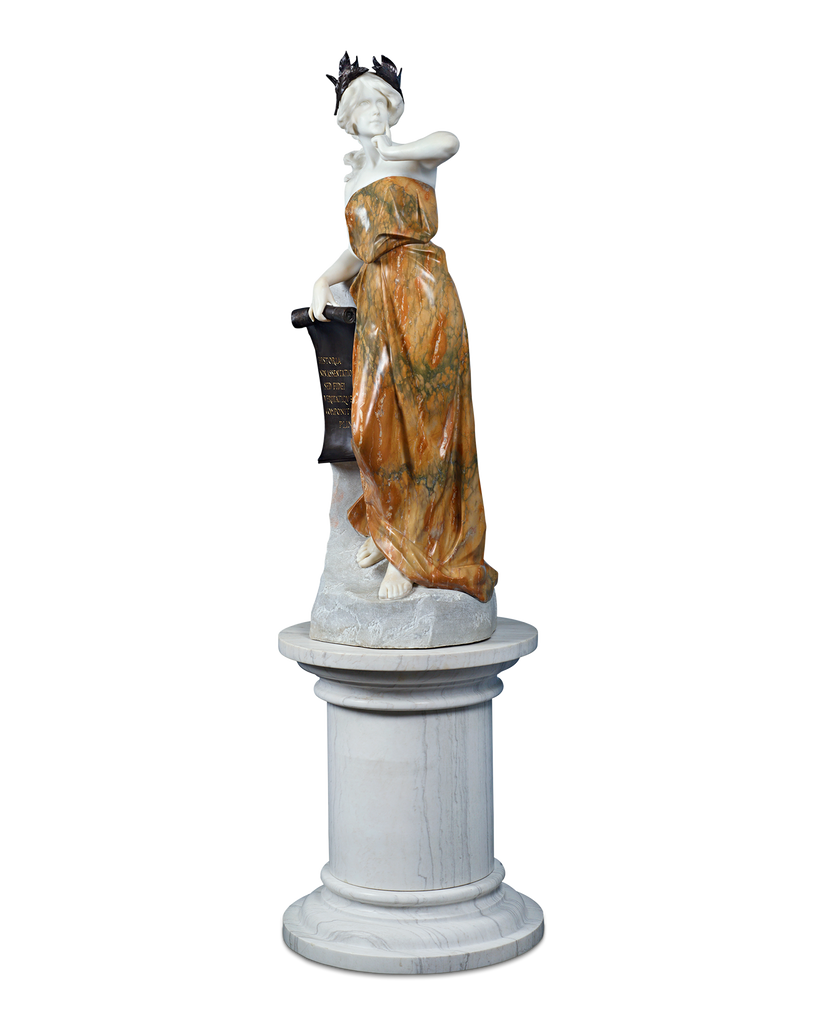Some of the world’s greatest fine art has been inspired by the incredible tales and characters of ancient Greek and Roman mythology. These stories gave artists heroes, villains and mystical creatures as enthralling subject matter. Since these stories were passed down through the oral tradition, art based on mythology is a powerful storytelling aid.

Mythology and art have long gone hand-in-hand. Of course, mythological art was predominant in the ancient classical works of Greece and Rome, but its popularity carried over into the Renaissance and beyond. For a time, mythological subjects were among the few that met with approval from the French Académie, which called them the grand genre. Even contemporary art has found inspiration in these centuries-old legends, and their artistic significance continues even today. Because of its long-reaching influence, mythology has developed its own kind of vocabulary within fine art, and understanding these stories has become essential to understanding the entirety of art history, not only Greek art. Read on to learn about a few of the most important and frequently occurring mythological subjects in art.
Venus

Beginning with Venus, also known as Aphrodite, seems appropriate, as her position as goddess of love and beauty makes her story fertile ground for artists wishing to convey themes of incredible beauty and romance, as was often the goal in the Academic tradition. Some of these most universally recognizable artworks star this goddess (think Sandro Botticelli’s The Birth of Venus at the Uffizi Gallery and Alexandros of Antioch’s Venus de Milo at the Louvre Museum). She is also often portrayed alongside her son, Cupid, the god of desire and attraction.
While Venus so often represents love and seduction, her mythological anecdote plays a secondary role in most of the compositions she appears in. Venus offered a perfect opportunity for artists to present on canvas an exploration of the female nude in a way that was palatable to critics and audiences in centuries past. The beautiful woman in this composition by the French artist Émile Munier combines the inherent sensuality of Venus with the academic idealism that was essential to the 19th-century art world.
The Muses

Leda and the Swan

According to this myth, the beautiful maiden Leda, Queen of Sparta, was seduced by the king of the gods Zeus, who took the form of a graceful swan. He impregnates her during this encounter, resulting in the birth of Helen of Troy. It is one of the most well-known stories from classical mythology and has been a favorite subject of artists in every medium, such as Leonardo da Vinci’s lost painting of Leda and the Swan which now only survives as his sketches and copies made by his followers.
Leda encounters a divine swan in this masterfully composed work by the workshop of the great Flemish master Bartholomaeus Spranger. The artist interprets the highly charged tale not as one of aggression, but rather welcome intimacy, helped by the inclusion of Cupid in the bottom right corner.
Achilles

Achilles is known as one of the greatest heroes of all of Greek mythology, his story made famous by Homer in The Illiad. The only surviving child of the sea nymph Thetis and the ancient King Peleus, Achilles knew from a young age that he was destined for a life of adventure and heroism.
Thetis, who wanted her son to live a long and extraordinary life, dipped the young Achilles into the River Styx while holding him at the foot in an attempt to make him immortal. The rushing water protected the young boy and made him invincible all over, except, of course, the heel that remained dry.
Although Achilles is most remembered for this one weakness, which would eventually lead to his tragic downfall, artists like French Academician August-Clément Chrétien’s enjoyed capturing the warrior in his prime. Here, Achilles is depicted as a youth with the centaur Chiron, the legendary tutor of gods and heroes who instructed him in the arts of medicine, music, riding and hunting.
Perseus

Bacchus

Depictions of bacchanalian pursuits have long been enticing and intoxicating for artists who wish to impart a lively, joyous attitude onto their work. Bacchus, or Dionysus, was the Greek god of wine and merry-making, and he was the subject of worship in many festivals and rituals. He is always depicted drinking, feasting or carousing (or any combination of the three) in Ancient Greece. This drawing by the great modernist Pablo Picasso demonstrates the long-reaching artistic influence of Greek mythology, and it embodies the carefree and somewhat mischievous attitude of this most-popular god.
Greek mythology art is timeless and can be appreciated by any art lover, whether that be an original renaissance art sculpture displayed in the Metropolitan Museum of Art in New York or an art print used as home decor. Owning a painting or artwork based on Greek myth is a beautiful opportunity to tell an ancient story. Now that you know the stories behind the art, the only thing left to do is share them as the Greeks did.
M.S. Rau offers an array of fine and decorative art inspired by the mythical past. Explore them on our website.






